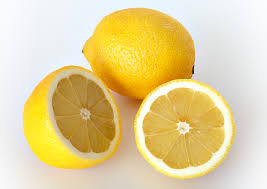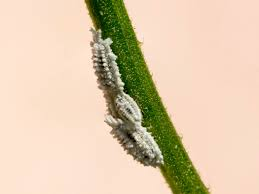Lemon
 Common Name: Sour lemon, Persian lemon, lemon
Common Name: Sour lemon, Persian lemon, lemon
Scientific Name: Citrus limon
Climate: Warm and temperate
Plant Description: It is a perennial tree, often with thorns, that grows up to four meters in height, with an open crown with many branches. Its leaves are alternate, simple, with an oval shape. The flowers, commonly called orange blossoms or orange blossoms (like those of the orange tree), are solitary or arranged in pairs. It does not tolerate cold and wind well.
Cultivation: You can sow the lemon tree from seed, but grafting is the most recommended method. Grafting requires some special care, therefore, so you do not have experience, the most advisable thing is to acquire the molts ready to plant and packaged in the nursery. To proceed with planting, the best time is the rainy season, in the coolest hours of the day, with little sun.
The lemon tree begins to produce lemons approximately three years after the start of cultivation. Four months after flowering, the harvest can take place, which lasts another 120 days. In each harvest, about 80 kg of fruit per plant can be obtained. It should be pruned in spring.
The lemon tree needs light and moisture. It needs to be planted in a place where there is enough sun and it needs regular watering. In the dry season this will be daily. Keep the area under the tree canopy clear of grass and other vegetation, which consume water.
It is important to plant it in clay soil, which filters well. You need a lot of fertilizer rich in nutrients such as nitrogen, phosphorus or potassium. So, when sowing the seeds in the soil, it is not only important for the soil to filter, but also about two kilos of fertilizer will be necessary.
 Uses: The lemon has a lot of vitamin C and citric acid. It is used to make desserts or natural drinks such as lemonade and meringue milk, to which cinnamon is also added. It helps to clean and heal wounds of all kinds. It is very rich in minerals, among which potassium, magnesium, calcium and phosphorus stand out. Potassium, for example, is an essential element and good for the treatment of hypertension.
Uses: The lemon has a lot of vitamin C and citric acid. It is used to make desserts or natural drinks such as lemonade and meringue milk, to which cinnamon is also added. It helps to clean and heal wounds of all kinds. It is very rich in minerals, among which potassium, magnesium, calcium and phosphorus stand out. Potassium, for example, is an essential element and good for the treatment of hypertension.
In cases of gastrointestinal poisoning from consuming spoiled food, bad combination of ingredients or difficult digestion and liver and gallbladder discomforts, lemon works by normalizing the digestive process, neutralizing toxins and assisting in their elimination. It is also a great consumer of microbes and the best protector against infectious diseases.
 Pests and diseases: One of the most common problems of the lemon tree is the leaf miner that attacks young leaves, causing white spots and curled leaf. It can be treated with neem oil. It can also be attacked by aphids that affect the flowers and deform the fruit. They can be prevented by spraying occasionally with neem if the tree is already infected. In summer it is affected by the cottony mealybug, which thrives in high temperatures. With a mixture of alcohol and water in equal parts and a tablespoon of washing liquid, spray the affected parts.
Pests and diseases: One of the most common problems of the lemon tree is the leaf miner that attacks young leaves, causing white spots and curled leaf. It can be treated with neem oil. It can also be attacked by aphids that affect the flowers and deform the fruit. They can be prevented by spraying occasionally with neem if the tree is already infected. In summer it is affected by the cottony mealybug, which thrives in high temperatures. With a mixture of alcohol and water in equal parts and a tablespoon of washing liquid, spray the affected parts.
Flakes and cracks in the bark may appear from citrus exocortis. There is no other option but to cut and burn the tree to prevent it from infecting others. The fungi that attack the lemon tree can be eliminated with natural fungicides that contain copper.1
References:
En español: Limón
